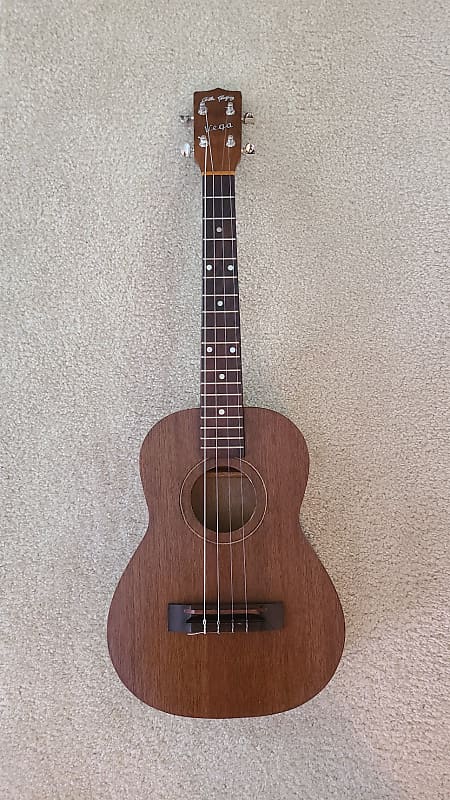After seeing the post of the 100 year old ukuleles, as a “bari” player, I have been intrigued with the “Who made the first Baritone
Ukulele ?” It seems there is no clear cut answer and the two that are most talked about are Herk Favilla baritones and the Arthur Godfrey
baritone made by Vega. I try to look at everything in a scholarly manner as getting history right is at least for me important.
i own a few baritones including a mid 1950’s Favilla, a 1960 Martin, and a 1950’s Harmony. I have seen a few Vega Arthur Godfrey
models although I do not own one. Recently I purchased a Stewart Wondertone baritone. I know the identical metal logo was used
for the Stewart arch top guitar manufactured in 1952. It seems odd to me that so many makers were active in the 1950’s and then
Martin in 1960 and Gibson soon after. So at least four makers were producing baritones by 1953 according to what I have seen.
Why so many produced a baritone within such a short stretch is to me an interesting question.
So thus far having no exact dates I have come up with these.
Favilla late 1940’s
Vega late 1940’s
Stewart 1952
Harmony 1953 (catalog)
Martin 1960
Gibson 1962
I know others produced early baritones that I have not included
Kamaka or other Hawaiian makers
Ukulele ?” It seems there is no clear cut answer and the two that are most talked about are Herk Favilla baritones and the Arthur Godfrey
baritone made by Vega. I try to look at everything in a scholarly manner as getting history right is at least for me important.
i own a few baritones including a mid 1950’s Favilla, a 1960 Martin, and a 1950’s Harmony. I have seen a few Vega Arthur Godfrey
models although I do not own one. Recently I purchased a Stewart Wondertone baritone. I know the identical metal logo was used
for the Stewart arch top guitar manufactured in 1952. It seems odd to me that so many makers were active in the 1950’s and then
Martin in 1960 and Gibson soon after. So at least four makers were producing baritones by 1953 according to what I have seen.
Why so many produced a baritone within such a short stretch is to me an interesting question.
So thus far having no exact dates I have come up with these.
Favilla late 1940’s
Vega late 1940’s
Stewart 1952
Harmony 1953 (catalog)
Martin 1960
Gibson 1962
I know others produced early baritones that I have not included
Kamaka or other Hawaiian makers




